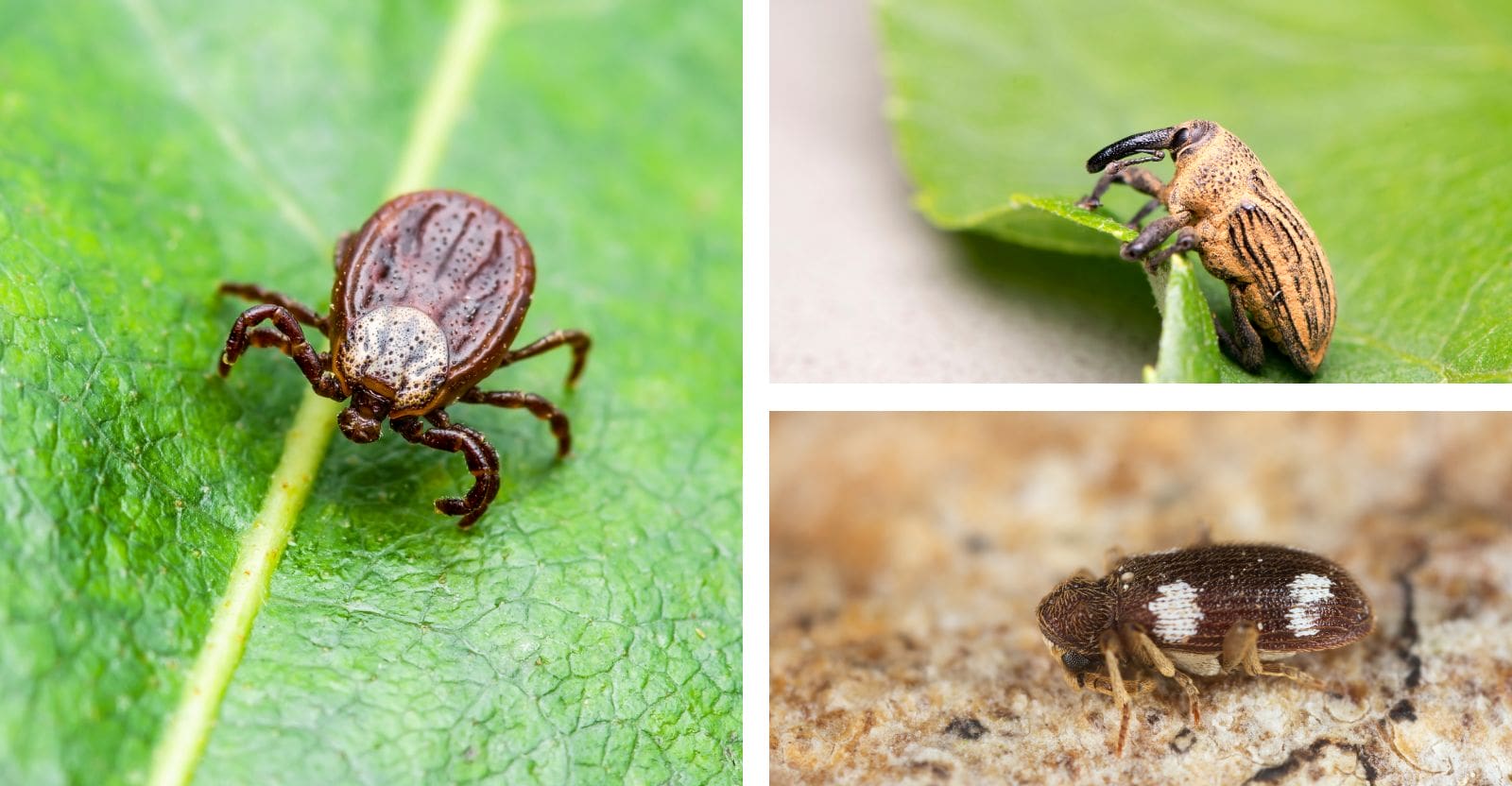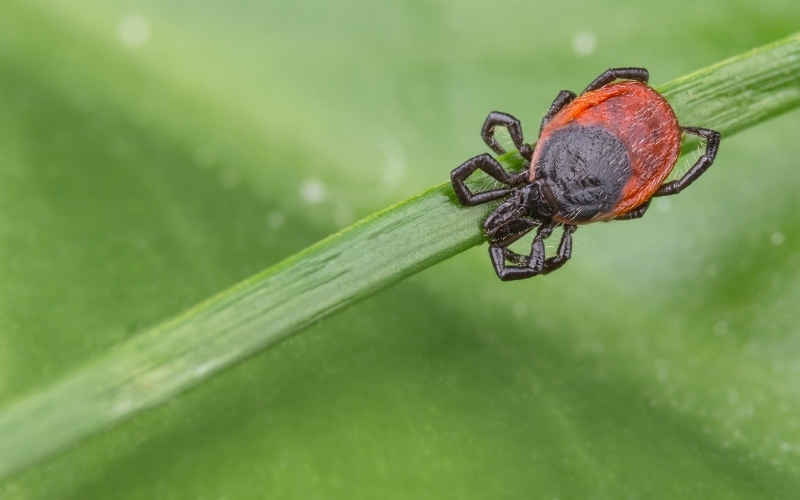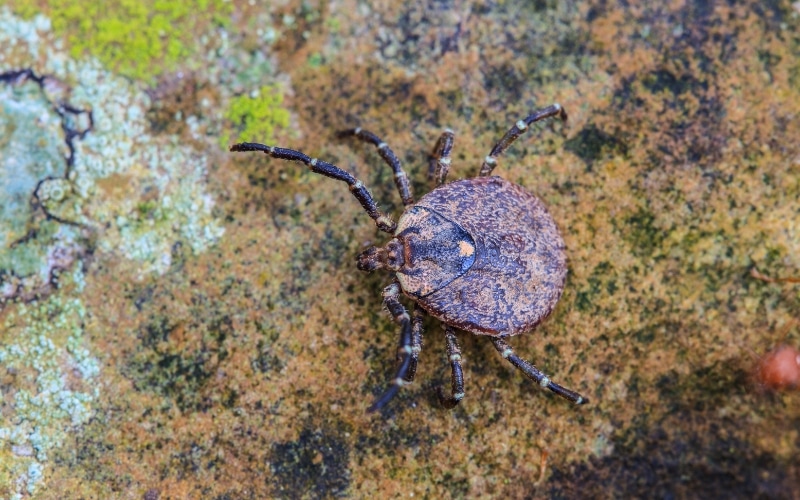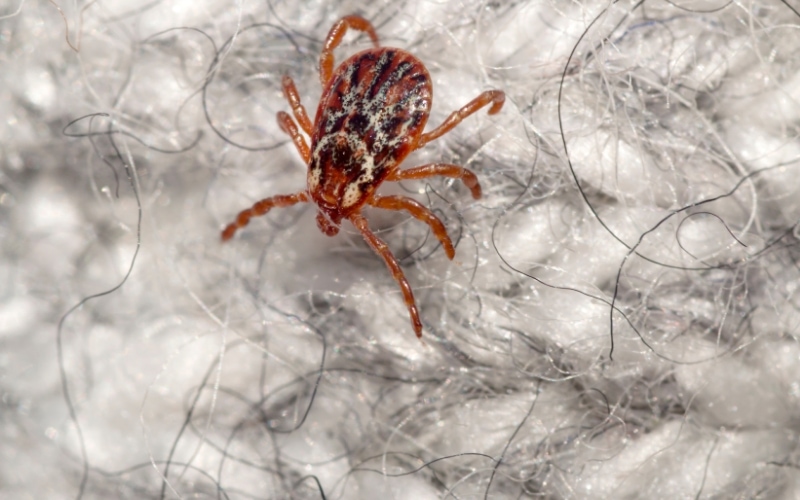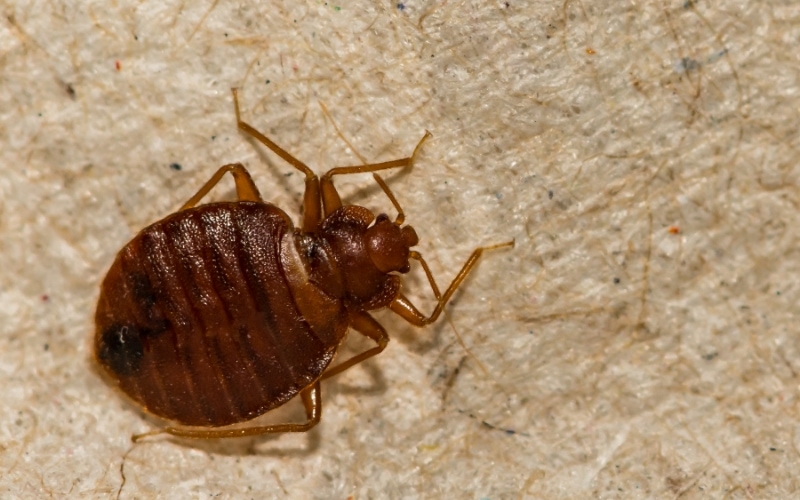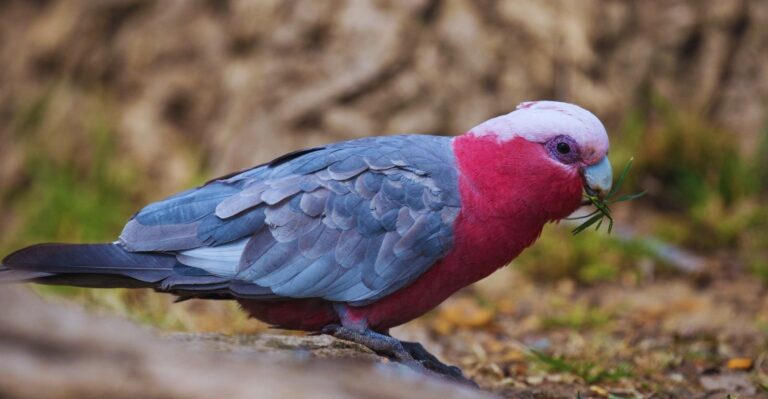Amazon has put together some great Home Gift Deals – save money and get your shopping done at the comfort of your home! Click here to see deals on Amazon
If there is one creature responsible for more human misery than any other, it’s the tick. There are over 800 species of these tiny blood-sucking parasites, which are found all over the world.
While many species are known to feed on rodents, birds, and even larger mammals, the ticks most prevalently found in the United States are the deer tick or dog tick.
If you’re looking at a bug but not sure if it’s a tick, we have included a list of 15 bugs that look like ticks. These bugs look a lot more similar to other arachnids, like ticks, than you might think.
Let’s get started.
What are ticks, and what do they look like?
Ticks are tiny insects that live on the ground, in the grass, or in leaf piles. They’re usually found in the northeastern and upper Midwest regions of the United States, Canada, and Europe.
Spring and summer are the most active season for ticks, but they can live all year long. You can find Lyme disease-carrying ticks in wooded or forested areas. They can be difficult to spot because they’re so small.
The tick’s mouth is shaped like a tube with two small hooks on end. They attach themselves to a host by inserting their mouth into the skin and feeding on the host’s blood.
Ticks go through 4 life cycles from egg, larva, nymphs, and adult. The tick larvae are very tiny less than a millimeter (mm) long, while nymphs grow a bit taller, around 2 mm long. A fully grown matured tick can reach anywhere from 6 mm to 10 mm long.
You can identify a real tick by looking at it closely. A fully matured tick has eight legs, while most other insects max out at six legs. At the top, they have a flat and oval-shaped body with a hard exoskeleton.
The best way to know if the insect you’re looking at isn’t a tick, check if it has wings or antennae. If the bug you’re looking at has an antenna or wings, then it’s not a tick.
Most common ticks and their identification
Several different types of dreaded ticks are found in the wild. Following tick species variety is more well known.
Lone star ticks
The lone star tick is the second most common tick in the entire United States. It’s found from Maine to Florida and up to Minnesota. The Lone Star tick is reddish-brown. This tick is the only tick that has a white spot in the middle of the back.
The female tick is slightly taller than the male tick. Adult lone star ticks are only about the size of a sesame seed, making them easy to overlook.
They carry a host of diseases and viruses. The long and sharp teeth make it difficult to dislodge them with characteristic features of different bites.
American dog ticks
American dog ticks can be differentiated from other ticks by three distinctive features:
- The white marking on the scutum
- The white luster on the legs
- The adult ticks’ size can grow anywhere from 1/8” to 1/2” long
The back of the American dog ticks usually is a grayish-brown color. The tick has a red-orange or rusty coloration on the underside of the scutum.
Like all ticks, including black-legged ticks, brown dog ticks are parasitic arachnids that infect the skin of any animal they get on.
While most people are familiar with the typical dog tick and its danger to dogs, they can pose a risk to other animals and humans.
Blacklegged (deer) tick
These ticks are found in the woods and along fence rows and ditches. They bite deer and, after feeding, drop off and go into the ground to develop into the next stage of their life cycle.
They’re known to cause several serious human diseases such as ehrlichiosis and anaplasmosis. These diseases can cause fever, chills, headaches, muscle aches, and fatigue that is often mistaken for the flu.
Blacklegged deer ticks have long, flat bodies. They’re reddish-brown and are as flat as a pancake. Blacklegged deer ticks are passive carriers of Lyme disease. It’s a painful disease that can be fatal if not treated.
Soft tick
Soft ticks are parasites that feed on the blood of their host organisms, which range from dogs and humans to birds and reptiles.
They’re sometimes known to carry several diseases, including Lyme disease. It’s important to recognize them and protect your family from these pests.
Soft ticks are quick feeders and often leave once they’re full. It sometimes makes it difficult to know what has bitten you. In an extreme case of tick infestation, you may have to hire a pest control specialist.
15 most common bugs that look like ticks
Many insects can look like ticks, and it’s essential to identify them correctly to avoid causing harmful health effects, including Lyme disease.
Since there is no way to eradicate them permanently, the best way to avoid them is to safeguard yourself against ticks in the first place.
Let’s check out the list of 15 most common bugs that look like ticks, but they aren’t. This doesn’t mean they all are harmless.
1. Brown Marmorated Stink Bugs

Identifying Brown marmorated stink bugs can be tricky, but it’s easier if you know what to look for. Their eggs are laid in clusters, usually on the underside of leaves.
The eggs are 0.5 mm long and greenish-white in color. They’re oval and can be slightly flat. These bugs don’t belong to ticks’ arachnid’s species.
They have six legs and antennae, but ticks have eight legs with no antennae. The stink bug nymphs have a light greenish-yellow color with black antennae and brownish-red legs. They have a white stripe on their antennae.
2. Bed Bug
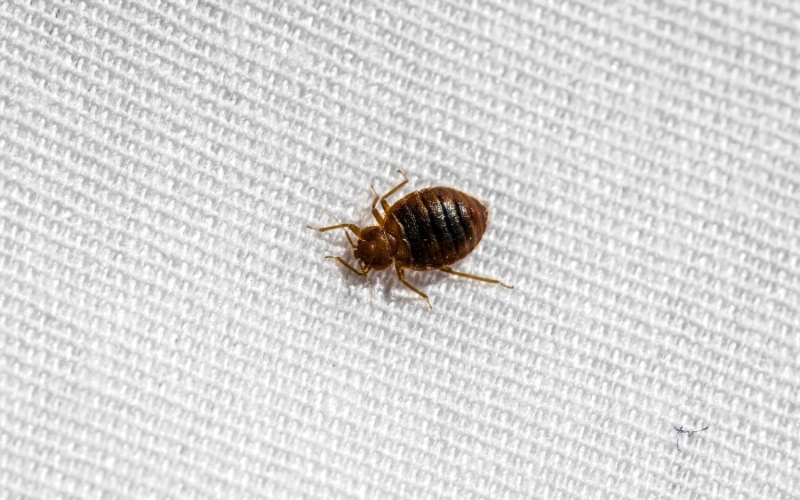
Bed bugs are parasites that feed on the blood of human hosts, and bed bug bites can be intensely itchy. Bed bugs aren’t dangerous, but they’re not a pleasant addition to life. People often find it confusing to differentiate between bed bugs and tick.
The adult bed bug is usually a reddish-brown color and about a quarter-inch long. It’s a flat, oval-shaped insect. They’re most active about an hour before dawn and feed on human blood, but they can also be active at other times during the day.
3. Poplar Weevil
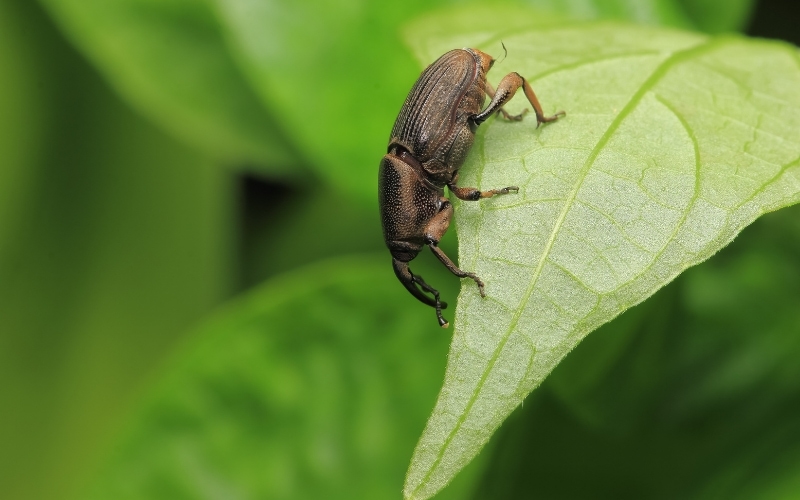
If you’ve found holes in your poplar trees, they likely are a sign of an infestation by the poplar weevil. This pest will cause extensive damage to your trees, which can break branches and lead to the tree’s death.
Several places have weevil outbreak every five to 10 years in summer. The beetle itself is a small metallic green creature with reddish-brown wings that measure roughly 1/4 inch long with a snouted nose.
They look very close to tick as they have the same size and dark color, but they can fly while ticks don’t fly. Fortunately, poplar weevil doesn’t bite humans or transmit any disease.
4. Harlequin Cabbage Bug

Harlequin cabbage bugs belong to the Coreidae family that have hard forewings. It’s a member of the stinkbug family and is distantly related to the more familiar Colorado potato beetle.
Their nymphs are darker in color and have no wings. Compared to tick, which is an eight-legged arachnid, the cabbage bug has six legs.
Adult females, which have wings, have an oval-shaped or elongated body. They have stink glands at the base of their legs, a trait that ticks don’t have.
Characteristics of the Harlequin cabbage bug’s head include:
- A forward-pointing snout
- Shorter antenna than its body
- Red-and-black eyes
5. Carpet Beetles

Carpet beetles are common house pests that come in many different shapes and sizes. They could be hiding anywhere in your home.
However, unlike ticks, you aren’t likely to encounter them outside your home. They spend most of their lives within carpets, walls and usually only come out when it’s warm.
Carpet beetles like to eat the natural fibers made of carpeting, wool textiles, and other household items. If you’re looking at your carpet and wondering what the little white spots are that you see, they could be a carpet beetle.
6. Spider Beetles
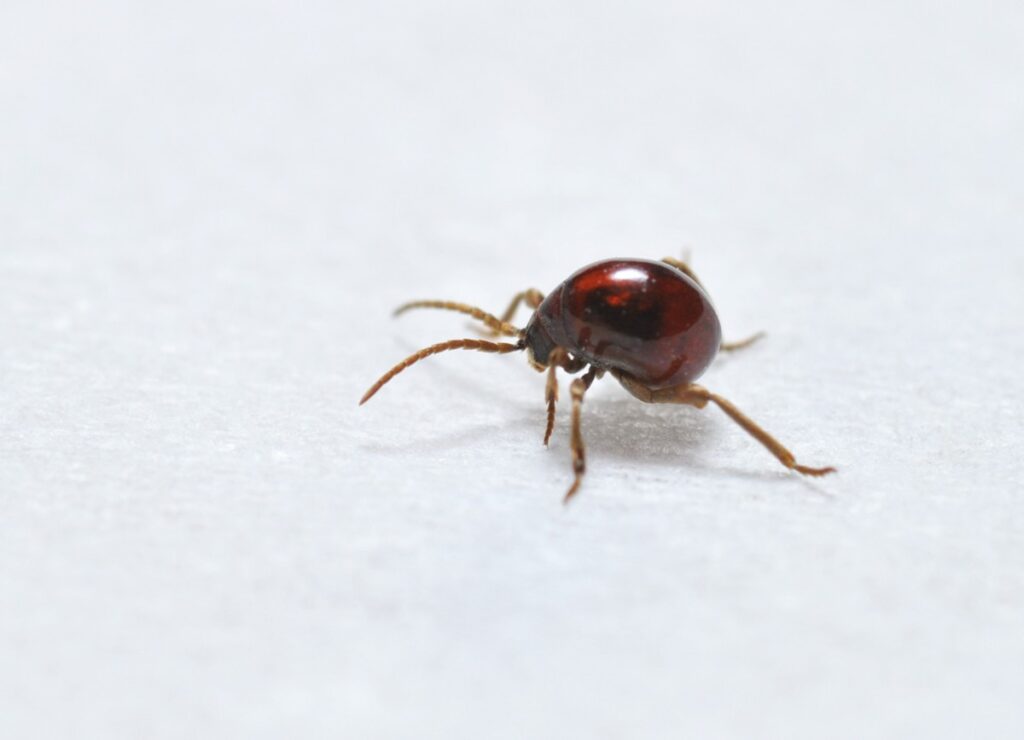
Spider beetles are a type of sap-feeding pest. They’re usually found in the grass or on the outside house. They’re about 1/2-inches long and have a long slender body, making them easy to identify.
These tiny oval-shaped insects have brown heads. Their thoraxes and dark legs are often mistaken for spiders because of their shape, but they’re beetles. The spider beetle larvae are white and up to 2 mm long with blackheads and legs.
7. Ash Plant Bug
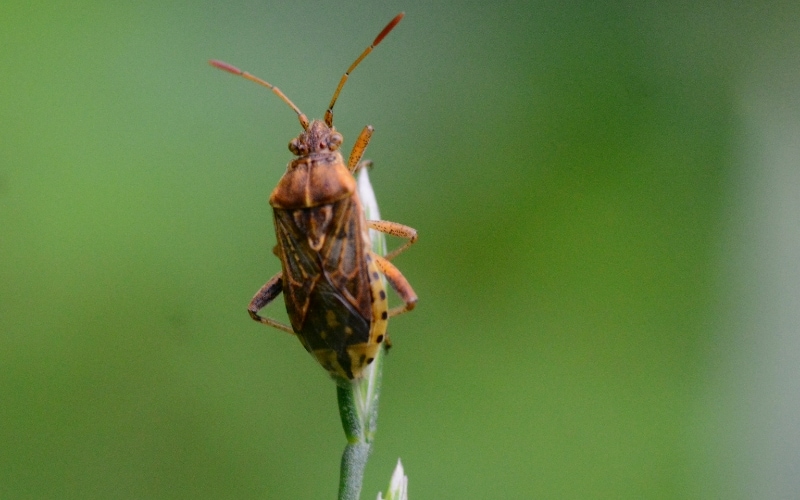
The ashplant bug is a sap-sucking pest that attacks ash trees. The bug sucks the sap out of the leaves, and this can cause the leaves to wilt and turn brown.
They resemble close to deer ticks (though it’s not a true tick). The insect is so tiny that it’s hard to see with the naked eye.
Unlike ticks, they don’t pose any danger to humans, but their round shape and black coloring make it easy to confuse with ticks. If in doubt, look for the antenna and count if it has six legs, confirming that it’s not a tick.
8. Head Lice Bug

Head lice bugs are tiny wingless insects that live off the blood of their host. They’re usually found in the hair of humans. But sometimes, they can also be found in the feathers of birds.
Like ticks, head lice are visible to the naked eyes even though they’re quite small, up to 2 mm long. The good news is that they don’t carry any diseases, unlike ticks that sometimes carry life-threatening diseases.
They have six legs and have a very light creamy-yellow soft semi-transparent body, whereas ticks have a hard exoskeleton.
9. Clover Mites

Clover mites are one of the most common pests of the garden, appearing during the mid-to-late summer. They’re particularly common in areas where clover has been planted and tend to thrive in the hot, dry late summer conditions.
They’re tiny, making them hard to identify. It has a soft body and therefore is easy to crush underfoot. They have their legs pointed forward, which makes it easy to mistake as antennae.
Fortunately, they don’t directly harm humans but are quite a menace to garden plants.
10. Bat Bug

Bat bug gets its name from its bat-like appearance and its tendency to love and nest in your attic. Bat bugs are primarily found in caves, and they usually bite bats. Bat bugs live in colonies and in homes located in attics or behind walls.
The easiest way to identify a bat bug is by looking at its long tube-like mouth. It may look similar to bed bugs, but it has a hairier thorax. They’re also a lot smaller than the common bed bug.
11. Chigger
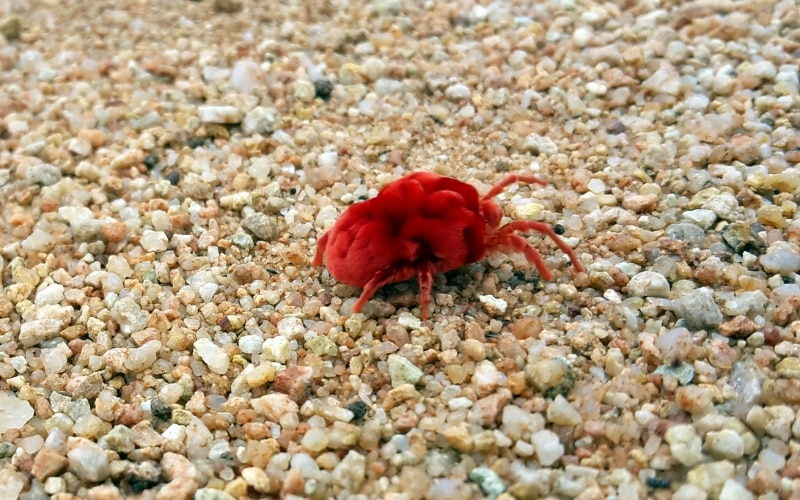
Chiggers are also known as harvest mites, but they’re actually not mites at all. They’re more closely related to ticks, spiders, and scorpions.
These are primarily red color insects that are less than 1 mm long and are oval in shape. They’re very small, which helps give them the common name of red bugs.
You can identify a chigger mite as it’s a semi-transparent, reddish-brown parasitic arachnid. You can distinguish it from other arachnids, such as ticks, by six legs and an oval body.
To prevent chigger bites, avoid wearing shorts and sandals when spending time in high grass.
12. Cockroach Nymph
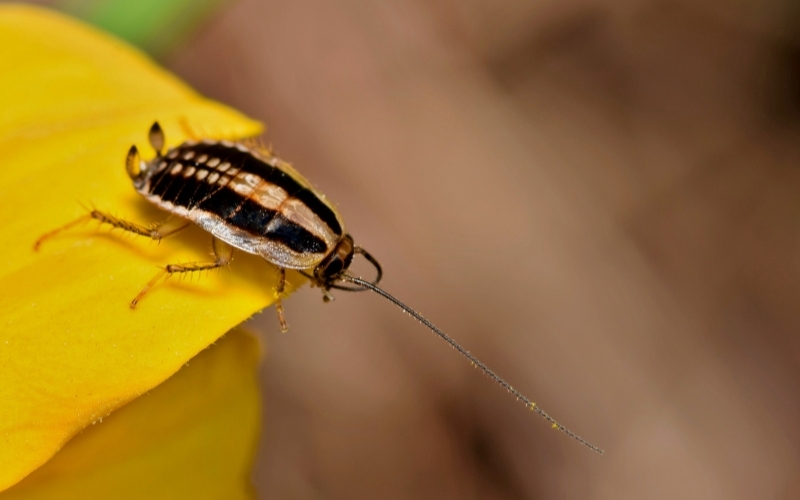
Cockroach nymphs are the babies of the cockroach family. They’re white and look like small worms. They spend most of their time hiding in cracks and under floorboards.
Nymphs are lighter in color than their adult counterparts, which is why they’re sometimes called brown-banded cockroaches.
They’re usually less than 3 mm long and darken as they grow. They have a very uncanny appearance, like ticks when they just hatched from an egg.
13. Swallow Bug

A swallow bug is a small, wingless tick-like bug that is nearly identical to adult ticks. However, they’re distinctly flatter than the oval shape of ticks by appearance. They’re native to the southern United States and Central America.
They breed during the summer and are also found in homes where they tend to bite humans.
Some swallow bug types may look similar to bed bugs, but they’re more grayish-brown than reddish color for bed bugs. They can survive several weeks without having any food.
14. Booklice Bug
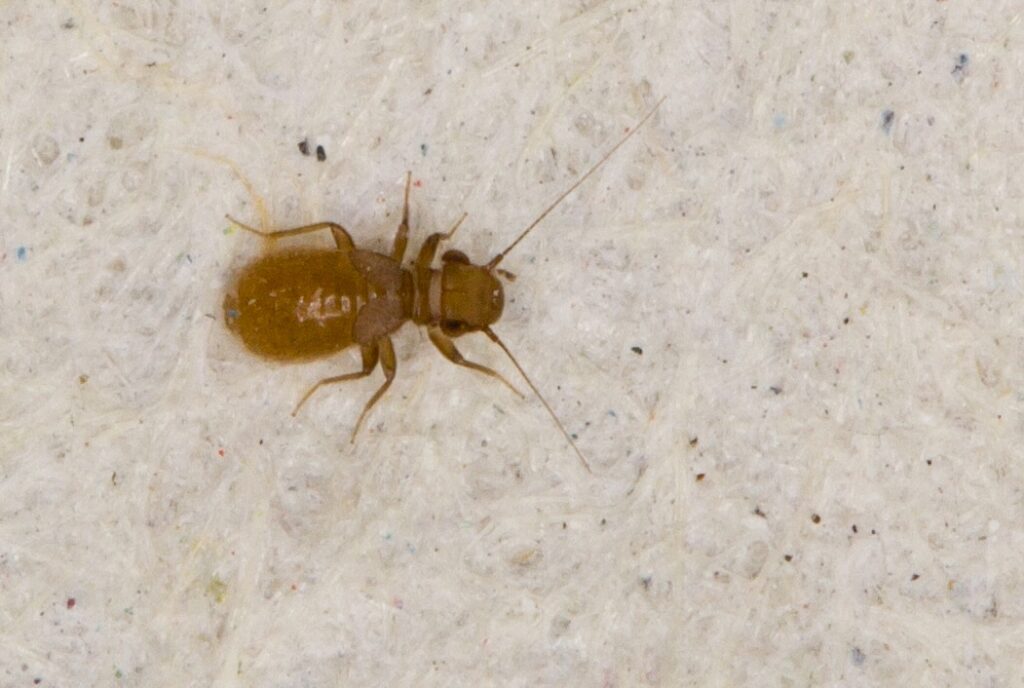
Booklice are the most common type of pest found in books and are also known as Psocids. You may find these inside books that are stored for an extended period. Paper cellulose becomes a primary source of food for these pests.
The booklice bugs are usually light in color but can appear dark in color when feeding on the binding glue. They’re small insect that also feeds on fungi, algae, and other decaying matter.
15. Drugstore beetles
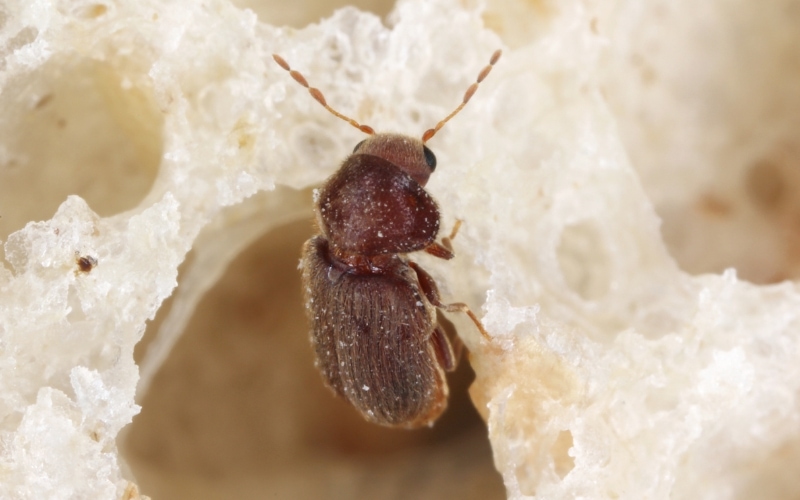
Drugstore beetles are small size insects that are usually less than 3.5 mm long. They have hard brown outer shells, and adults have wings underneath. They’re attracted to light and have a slightly oval-shaped body resembling ticks.
They’re often found hidden in dry and moist spots such as the kitchen and pantries. They can live without food for several weeks. You may often see them munching on household foods such as flour and cereals.

Don’t forget to share this post

